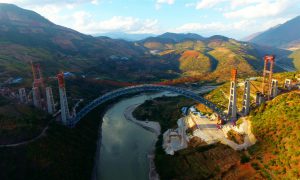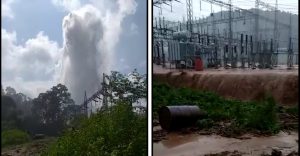An important project on climate change has been disrupted by the prevailing security scenario and communication shutdown across Kashmir, say scientists at the University of Kashmir in Srinagar. The project is part of the Himalayan Alpine Dynamics Research Initiative (HIMADRI), in which scientists have been studying for the past five year the alpine tree-line eco-tones to observe the impacts of climate change.
Kashmir has been under a communication clampdown since August 5, 2019 when the government of India took drastic steps to fundamentally alter the semi-autonomous status of Jammu & Kashmir. Though most of the telephone landlines have been restored some three weeks back, mobile phone and internet facilities are yet to be restored in the region. This has had a serious adverse impact on normal life. Research and education are among the worst-hit sectors.
The data hole in the Himalayas
Even in the best of times, insufficient long-term ecological records in the Himalayas in general, and Indian Himalayas in particular, is a major hurdle in climate impact studies, scientists said.
The Intergovernmental Panel on Climate Change (IPCC) in its reports has also said that the Himalayas are one of the most data deficient areas, compared to other mountain regions. Considering the crucial role played by the Himalayan region in the emerging global climate change scenario, the scientists said that some years back, the need for a long-term monitoring and standardised data collection programme was felt by researchers interested in the Himalayan ecosystem.
“To study the data with complete detail, a network named HIMADRI was designed and established with a multi-institutional framework,” said a scientist in the Botany department of Kashmir University. Due to the security situation most of the people interviewed for this report asked not to be identified by name.
This network for long-term regular monitoring of the ecologically sensitive parameters at benchmark sites selected in various summits of the Indian Himalayas will enable researchers to understand various dimensions of alpine ecosystem in the years to come, the scientist said. The project is sponsored by the Indian government, and coordinated by the GB Pant Institute of Himalayan Environment and Development, a government-run research institution based in Almora, Uttarakhand.
Twenty summits with more than 1,000 quadrates spanning the states of Jammu & Kashmir, Himachal Pradesh, Uttarakhand, Sikkim and Arunachal Pradesh have been established at various elevations (ranging between 3,200 and 4,200 metres) of alpine vegetation ecosystem. Automated soil temperature loggers, set at hourly interval, are installed at many places “at 5 m in four true directions from highest summit point (HSP) which is going to give us better understanding” about this temperature sensitive ecosystem, reads the concept note of the project.
Disruption in data gathering
To study the impact of climate change on tree-line shift and the dynamics of alpine ecosystem, a long-term monitoring site has been established at Gulmarg, a famous mountain resort in Kashmir, which attracts hundreds of thousands of tourists annually. Lying on the northeast side of the Pir Panjal Range, Gulmarg is about 50 kilometres southwest of Jammu and Kashmir’s summer capital Srinagar. It encompasses the upper catchment area of Ferozpur Nullah (a tributary of the Jhelum River) and the forests that surround the famed Gulmarg meadow.
Botanists at Kashmir University said that the vegetation in Gulmarg mainly comprises of coniferous temperate mountain forests of Blue Pine (Pinus wallichiana), sub-alpine forests of Silver Fir (Abies pindrow) and Himalayan Birch (Betula utilis), as well as alpine scrub and meadows.
Botanists, who are part of the team of scientists working on the HIMADRI project, said that the alpine eco-tones are experiencing shifts in response to climate change and mostly moving up the mountain slopes to colonise new areas.
As a result, the scientists said, the dynamics of the alpine eco-tone can be utilised as an excellent indicator of climate change. “Also, elevational gradients in the Indian Himalayas can serve as a natural experimental system to evaluate ecological and bio-geographical theories of species richness and their relationships to climate. To study the impact of climate change on tree-line shift and the dynamics of alpine ecosystem, establishment of long-term monitoring site has assumed urgent scientific priority in Indian Himalayas,” said one of the researchers.
He expressed his dismay that he and his colleagues in Kashmir could not visit the HIMADRI site at Gulmarg this year because of the ongoing communication shutdown in Kashmir.
“This year it was not possible to visit our research site. In August and September, I tried twice, along with other team members, to go to Gulmarg. But, on both the occasions, the local police officers at Tangmarg (on the way to Gulmarg from Srinagar) told me that Gulmarg is out of bounds because of security reasons,” the scientist said. “Life is more important than research,” the police official told him.
This means the continuity with which the data was being gathered has broken down.
“Over the past five years, we have gathered the data as per the requirement for the study. But not this year. When we put all the data (at the end of the study) into some model, there will be a gap; there will be a compromise on the precision of the results. It is a big blow to our study,” said another scientist.
According to the scientists, even if they were able to be physically present at the research site, lack of mobile telephone facility and internet would have still created hurdles. “When we go there, we manage logistics because of mobile phone and internet. For example, we contact pony wallas and other people during the research. We also need internet during the research work. But we had thought we can at least take the data. Unfortunately, we couldn’t do that as well,” the scientist said.
According to the scientists, the study is of “extreme significance” because in-situ data is not available in developing countries, and “absolutely not in the Himalayas.”
Below-ground carbon cycle
The botanists at Kashmir University said that another study that was impacted because of the communication blackout was the study on the below-ground carbon cycle.
The scientists said that Gulmarg is one of the 300 sites across the globe where this study is going on. As part of the experiment, researchers put tea-bags in different areas (at the research site) and take them out periodically to understand the below-ground carbon cycle. To understand the extent of below-ground carbon sequestration is important because the majority of the studies so far have been on understanding how forests act as sinks for carbon (known as the above ground carbon cycle).
“Below ground also, carbon sequestration is happening. But there is no depth of knowledge about it. So to understand that, some 300 sites have been identified across the globe and one of those sites is in Gulmarg,” a scientist said.
“We used to take out those tea bags periodically for assessing them. So far, we have taken the tea bags after the first six months, then after one year and (after) two years as well. September 30th 2019 was the due date for three years, but we couldn’t do that,” he said and added: “Globally, the study is going on without any hassle, but ours has got disrupted.”
![<p>Gulmarg, a key site to study effects of climate change in the Himalayas, has remained out of bounds to scientists for over two months, and they have not been able to stick to their data collection schedules [image by: Basharat Alam Shah / Flickr]</p>](https://dialogue.earth/content/uploads/2019/10/Gulmarg-1.jpg)








